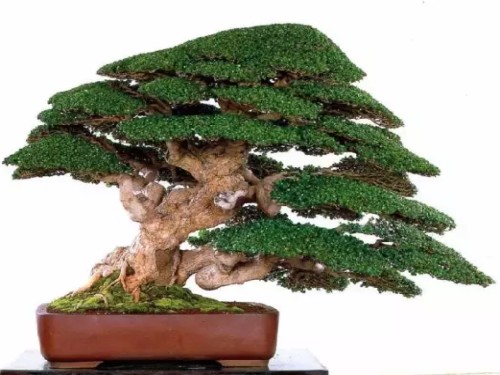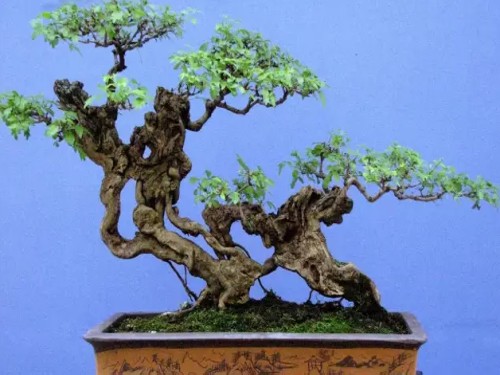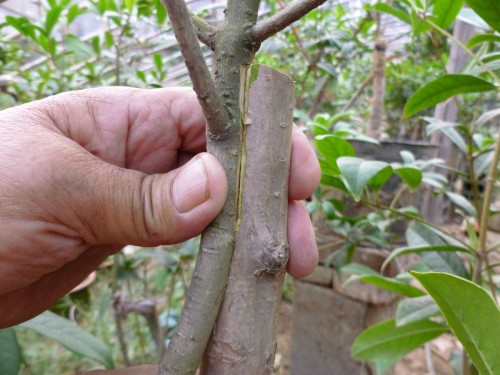Bare Root cultivation technique of Bonsai stump
With the further development of urban gardens and home courtyard beautification, the styling and landscaping of tree stumps has become more and more popular. In addition to the bonsai that can often be moved, people always linger on the landscaping of public green space and tree stumps in the home courtyard, which shows that people advocate the state of mind of nature and the pursuit of the beauty of life art has been deepened day by day.
The stumps excavated should be planted in a place with plenty of sunshine, loose and fertile soil and convenient drainage. Another method is to plant the dug-up stump into a mud basin and put it in a greenhouse to promote germination and green. Pay attention to watering and spraying to prevent loss of water and death, but do not overflood to avoid rotting roots.

In addition to ground planting, the excavated stump can also be cultivated in mud pots, wooden boxes, baskets and so on. The size of the container depends on the size of the stump. A drainage hole is left at the bottom, and the coarse sand can be laid on the bottom in order to have good air permeability. Potted plants are beneficial to the combination of modeling processing and fine management. In order to improve the survival rate of potted plants, the trees can be buried in the soil, which can keep the potted soil moist and promote rooting and sprouting branches and leaves.
It is better for the stump to be planted in depth that the root does not expose the basin surface, and the root system of the plant continues to extend to the depth after planting. After curing for a period of time, raise the kettle every time it is watered so that the water rushes to the root, gradually flushing away the soil from the root and exposing the root. Combined with turning the basin to improve the cultivation position of the root, the exposed part of the root is gradually increased, so that its shape is gradually perfect for viewing.
Bare-root trees can be 3 cm to 5 cm higher than the original soil marks of trees, while trees with soil balls should be flush with the upper epidermis of the soil ball or slightly higher than the soil ball by about 2 cm. In order to reduce the settlement after watering and prevent the trees from sinking too much after planting, the soil should be filled in layers and each layer should be compacted.
When the trees are planted, they can be watered. The first time you water it, it must be well watered. After the water is poured, it can be placed in a semi-shady place without wind, and pay attention to drenching and spraying water frequently. About half a month later, the trees will grow new roots, which can be managed according to normal management.
Warm reminder:
When the stump is just planted, the soil is generally higher, after survival, during the prosperous growth period, the base of the stump is easy to sprout new roots. If the surrounding soil is not removed in time, the new roots grow more and more prosperous, and the original main roots will gradually be replaced by new roots and die. Therefore, after planting and surviving, when the growth is normal, it is necessary to remove the soil in time and gradually expose the main root to promote the original root to grow more fibrous roots.
Time: 2019-06-03 Click:
- Prev

Conception of design of potted landscape
Bonsai trees to trees as the main body, due to different materials, usually divided into tree scenery and pile scenery two categories. Treescape is made of young trees and processed artistically, so it is often called childhood cultivation. In the tree bonsai creation, a pot can be called a masterpiece of bonsai, its various parts must be integrated, unified coordination
- Next

Diagram of root connection method for bonsai head of tree stump
The grafting of tree stump bonsai can be carried out from May to August in North China, and the best time is from front to three volts, open-air maintenance, which can be successful in more than two months. When the white wax and sweet-scented osmanthus began to sprout in late March, the grafting was placed in the sunny shed to prevent the wind from losing water.
Related
- Fuxing push coffee new agricultural production and marketing class: lack of small-scale processing plants
- Jujube rice field leisure farm deep ploughing Yilan for five years to create a space for organic food and play
- Nongyu Farm-A trial of organic papaya for brave women with advanced technology
- Four points for attention in the prevention and control of diseases and insect pests of edible fungi
- How to add nutrient solution to Edible Fungi
- Is there any good way to control edible fungus mites?
- Open Inoculation Technology of Edible Fungi
- Is there any clever way to use fertilizer for edible fungus in winter?
- What agents are used to kill the pathogens of edible fungi in the mushroom shed?
- Rapid drying of Edible Fungi

